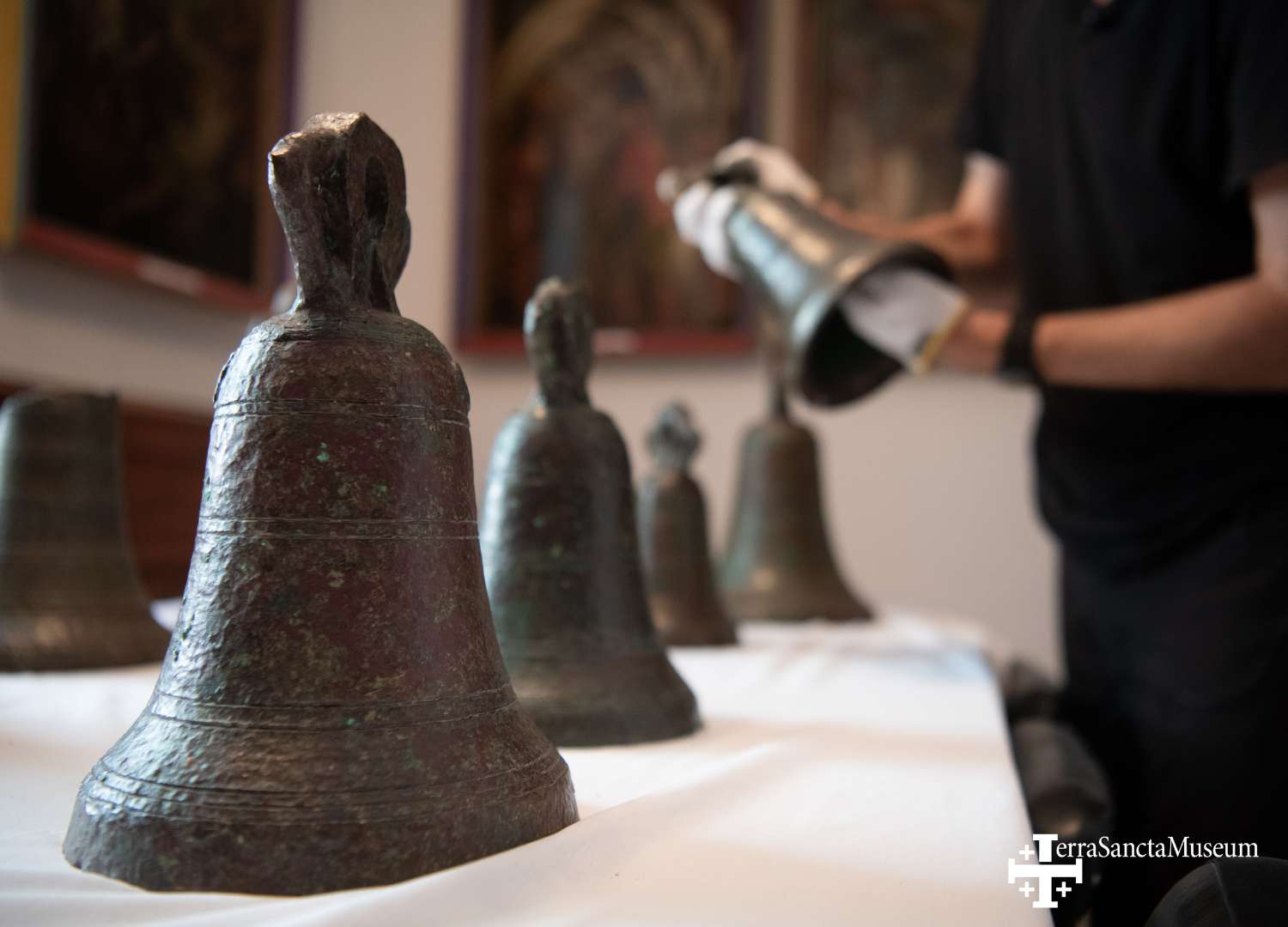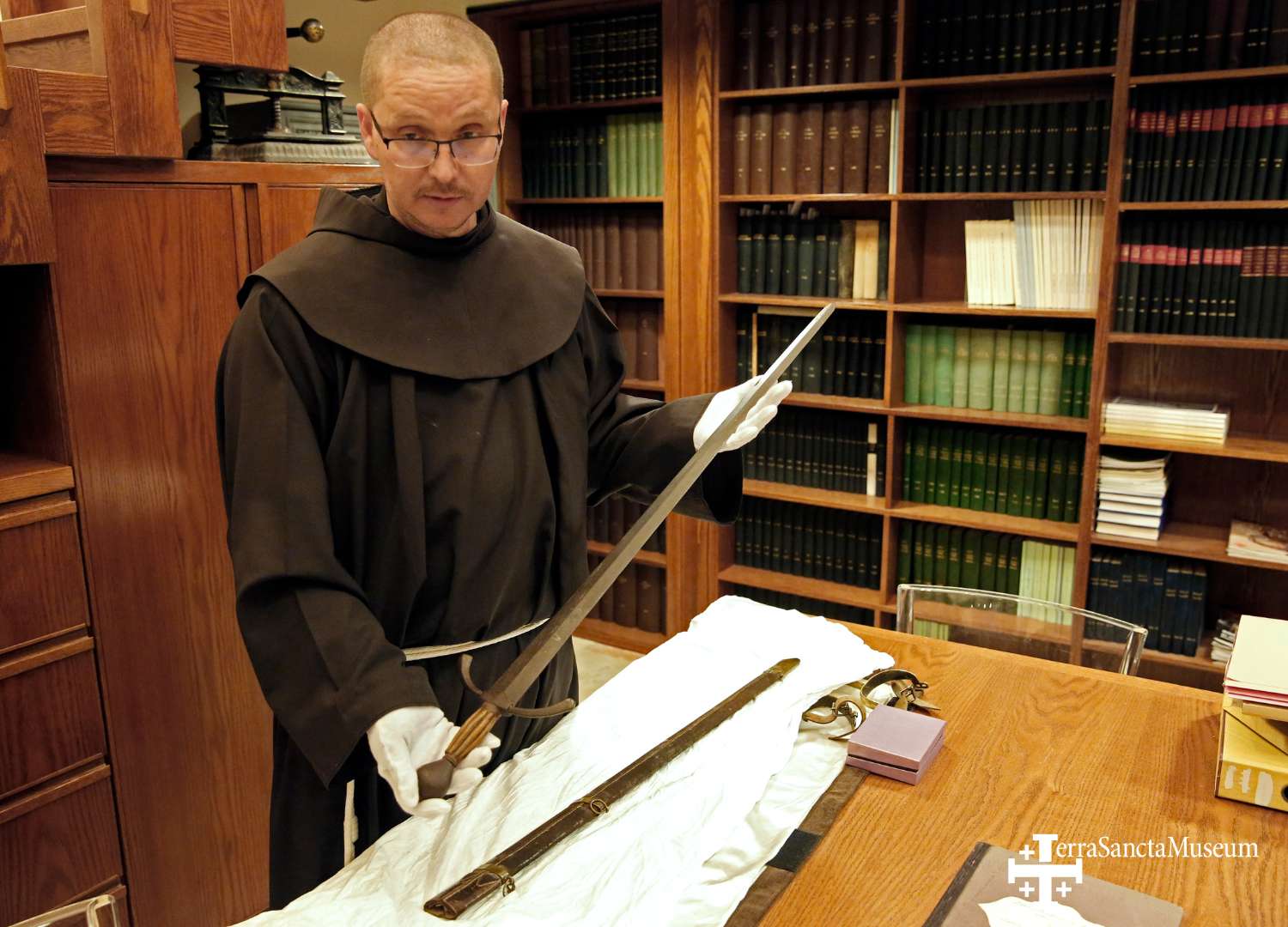The questions raised by the study of the medieval pieces of the Terra Sancta Museum
The production of the catalogues of the collections of gold and silver work continues. A part of this initiative is consecrated to the “Medieval treasure of Bethlehem.” The Scientific Committee of the Terra Sancta Museum can count on the expertise of Florian Meunier, Head Curator at the Louvre and in charge of the collections of the Late Middle Ages and Roman art. We met him.
It is one of the most ambitious projects currently carried out by the experts of the Scientific Committee of the Terra Sancta Museum. The publication of the pieces of gold and silver, initially contemplated as a single catalogue – bringing together hundreds of pieces dated from the Middle Ages to the contemporary period – is, in the end, going to give rise to the production of several works ! They are mobilizing the energy of a trio of head curators who have as their common denominator the Louvre. Michèle Bimbenet-Privat is about to start the page layout for the catalogue on 17th and 18th century objects, Anne Dion is working on the 19th and 20th century objects and Florian Meunier has been assigned the study of the medieval pieces of the Terra Sancta Museum – Art and History.


“At first I was to write the entries on the medieval pieces in this large scope project, but the specific character of this category soon became evident to us,” Florian Meunier recalls. While the studies of his colleagues could be supported by the hallmarks engraved on the later objects and on the registers kept by the Custody of the Holy Land to trace their origin, the specialist of the Middle Ages has to do without these clues. “We do not have any documentation that can help us assess this collection,” Florian Meunier explains. He returns to the approach that resulted in the selection of the objects for this catalogue : “We opted for an approach that was more liturgical than historical, putting aside the medieval archaeological pieces on display in Nazareth or at the museum of the Flagellation, already studied in depth.”
STUDYING THE TREASURE OF BETHLEHEM
This medieval catalogue is thus consecrated to the ““The Treasure of Bethlehem,” a priceless set of liturgical objects discovered at the end of the 19th century when restoration work was undertaken on the convent of the Franciscans and in the surrounding area. It will also include analyses of other medieval objects belonging to the Custody of the Holy Land, in particular a gilded Christ of the 12th century and the famous sword said to have been of Godefroy de Bouillon.
The Treasure is made up of an enamelled crozier, three candelabra, a carillon with thirteen bells, several organ pipes and a pair of bowls engraved with scenes from the life of St Thomas, very probably used for ablutions in a liturgical context. Two similar models from the same workshop, in a poorer state of conservation, are in the collections of the Louvre and the British Museum.


Florian Meunier raises the questions set by this miscellaneous group: “the bowls were very probably made in Germany before they arrived in the Holy Land; the crozier is intriguing because it is later than the other pieces of the treasure : it is from the beginning of the 13th century while the rest date back to the previous century! In the absence of documentation, comparison with pieces in other museums should allow us to know more about this collection.”

Gilded Christ of the 12th century
A PLURALITY OF EXPERTS
The curator of the Louvre is not the only expert who has been mobilized for this long-term venture : “I am waiting for a study on the organ and the bells by a specialist in medieval music and the results of the studies by epigraphists on the inscriptions on the candelabra and on the bowls. The catalogue will also include a study on the Basilica of the Nativity during the Crusades, which will allow us to reproduce the context of this treasure which is evidence of the presence of a large church or a European cathedral in Bethlehem.”


Questioned on the sword said to have belonged to Godefroy de Bouillon and its presence in the catalogue, Florian Meunier insists on its symbolic value : “it is a piece which shows the importance of the ritual of dubbing the knights of the Holy Sepulchre and a typical case of a mythical object attributed to a famous figure. It is totally linked to the Holy Sepulchre, it is an entry in itself !” The sword will be displayed in the room of the museum dedicated to this order of chivalry with the spurs and the pectoral cross used during the knighting ceremonies. Visitors will also be able to admire the registers of the knights kept by the Custodians of the Holy Land until the restoration of the Latin Patriarchate of Jerusalem in 1847.
The expert goes on, “This sword also raises the question of the heritage of the Crusader period in the Franciscan collections,” a subject which will find its place in the rooms dedicated to this period with a particular interest in its liturgy. Following this approach, the room called “the musical cloister” will display the carillon and the organ while the rest of the Treasure can be seen in the room dedicated to the Guardianship of the Holy Places alongside other pieces, such as a Palestinian model in mother-of-pearl of the Holy Sepulchre.

A HERITAGE GIVEN VALUE BY RESEARCH
The mystery surrounding the origin and the use of some of these medieval objects, such as the 12th century gilded Christ, is far from decreasing their interest for the expert : “this group of pieces is a path that leads to studying the specific historical context. The work done for this catalogue will bring clarifications on the materials used, the dating and will allow approaching these pieces in a different way. Their study by art historians can give them value from a heritage point of view and a historical depth specific to the works of reference of a museum. This work, the result of rigorous study and exchanges between the members of the Scientific Committee brought together by Fr. Stéphane Milovitch, will make these pieces truly singular !”
At the origin of the first « museum of the Franciscan fathers » started in Jerusalem in 1902, these medieval pieces, soon to be enriched by detailed documentation, will occupy a central place in the collections of the future Terra Sancta Museum – Art and History.



